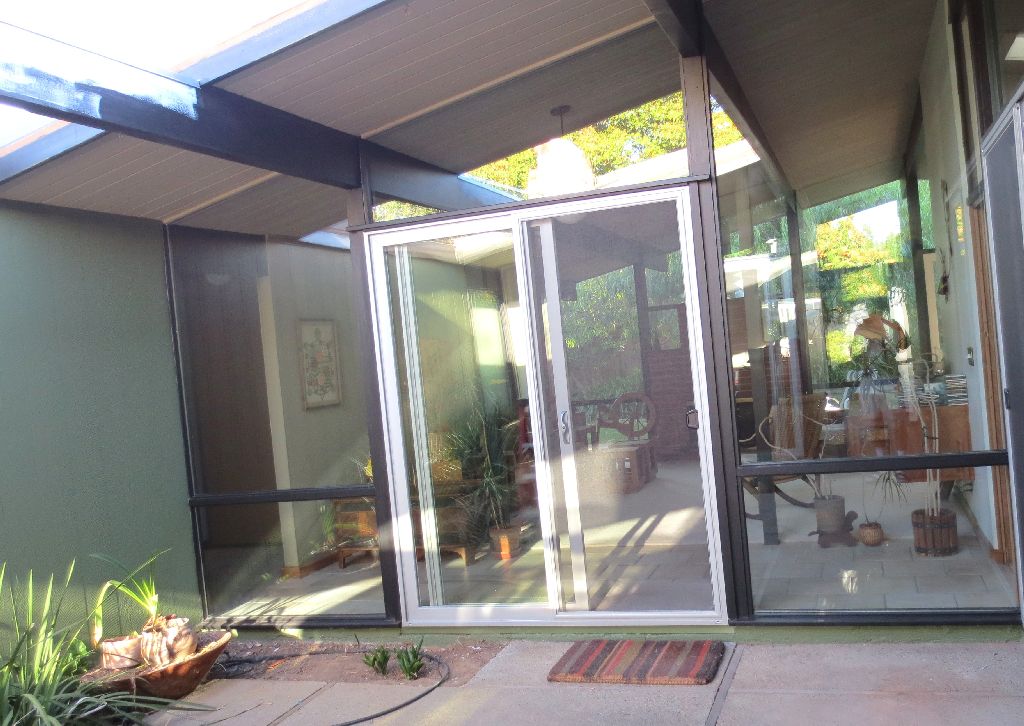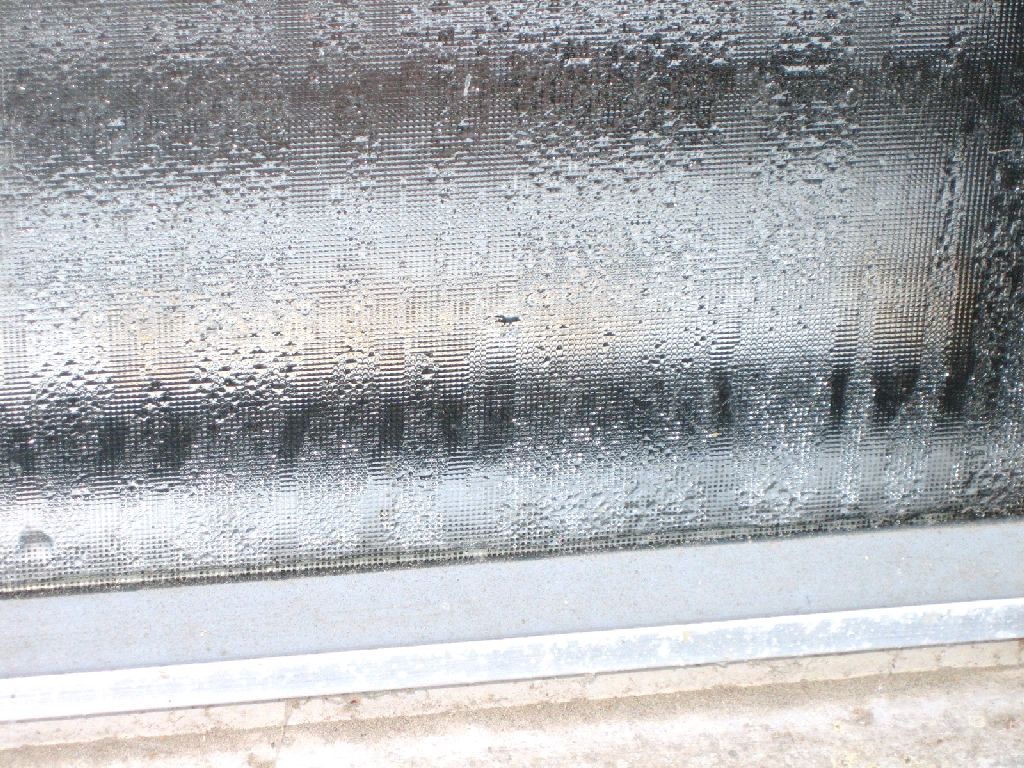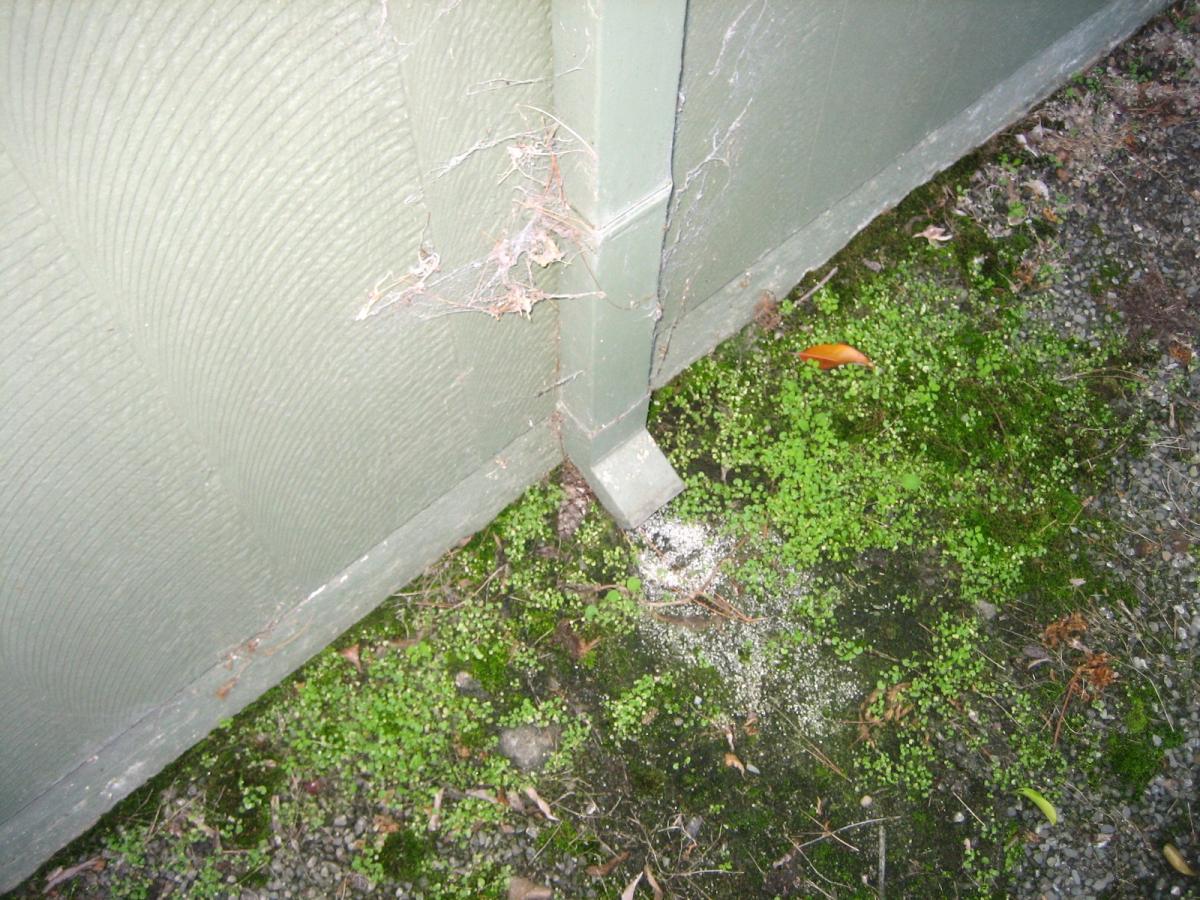
Ask the Experts: Is My Home Leaking?
 |
|
|
As winter approaches are you dreading the drafts? Consider then creating a draft of your own by bringing in a home energy assessment team complete with a 'blower door,' a device that gets the air moving through your house in order to detect leaks.
“A lot of people say, you can’t do anything to help Eichlers,” says Cindy Carey, whose family-owned firm Starburst Construction Co. has done energy audits on “a ton of houses, and a ton of Eichlers.”
“We say, baloney. There’s a lot you can do in an Eichler without changing the way it looks. We can change windows without changing the look of the house, we can put in double-pane sliding glass doors.” There are also aluminum windows and sliders with thermal-break frames that halt energy leakage through the frame itself.
The typical concerns Eichler owners have when they are seeking home energy efficiency improvements, Carey says, are “We want to maintain the Eichler look of the house, we want to be more comfortable in the house, and we want to save more money.”
 |
|
|
“We all know Eichlers are not very good about energy efficiency,” she says. They were built with minimal insulation, thin roofs, and wide expanses of glass. Moreover, Eichlers lack crawlspaces beneath the floors and attics above the ceilings, so easy ways of adding insulation that are available in other houses are lacking.
Many things of course can be done to improve the livability of an Eichler and reduce its energy consumption, from something cheap and simple, like caulking up leaky areas, to something costly and complicated, like adding solar panels.
"Solar is like the sexy part,” Carey says. “But if you haven’t made sure the building is good and tight, you’re still wasting energy. Our clients understand you want to seal up the house and the systems and make sure the home is performing well before you put solar on the roof.”
Before doing any serious energy efficiency improvements, homeowners should find out which solutions will be most effective for their home.
“When we do assessments, we see whether the house has leaks and where they are,” Carey says. “Where exactly is the discomfort coming from? We look at the frame, at penetrations, like holes for plumbing. If the radiant heat isn’t working. If ductwork on the roof is not sealed properly.”
That’s where the blower door comes in. Brian Smith, son of Carey and her husband Phil Carey, and an owner of the firm himself, will set the fan-like blower door into one of your home’s doors.
 |
|
|
“It depressurizes the house,” Cindy Carey says, “and then high pressure moves in. You can walk around and feel where the air is rushing in.”
A computerized meter “tells us how leaky the building is,” and Brian Smith, carrying a smoke stick, determines where those leaks are. From past work on Eichlers, the firm knows all about the usual suspects. But each house differs.
“Is it the skylight? Is it all the windows?” Cindy Carey says.
The home assessment takes between three and four hours, and the typical cost for an Eichler is $400. Carey notes that a good portion of that cost may be offset, for those who follow through with the improvements, thanks to Bay Area-wide rebates.
The assessment includes more than blower doors and smoke sticks. “We inspect the roof and the walls to see if any have insulation. We also do carbon monoxide combustion testing, the stove, boiler, the water heater, to see if they are vented properly and not leaking unhealthy stuff into the house,” she says.
Energy improvements are not cheap, but Carey, who calls herself 'the rebate queen,' works with clients to find whatever governmental or utility rebates or other incentive programs are currently available.
 |
|
|
Starburst’s typical energy upgrade in an Eichler costs about $20,000 or less, “depending on what we’re looking at and what we’re going to do,” she says. But for the truly ambitious, well, the costs can mount.
Carey talks of one client two years back, a retired educator who’d just moved into an Eichler in Sunnyvale. Her first winter there she hosted a houseguest from Maine, who was so cold she bought her host a pair of space heaters.
“We changed all her fixed windows to double-pane, and all the operable windows and doors,” Carey says. “She put on a new foam roof. We did general maintenance on her boiler and added solar for hot water and radiant heat. She spent over $100,000 [including the roof]. Her house now stays at 74, 73 degrees consistently throughout the year.”
- ‹ previous
- 61 of 677
- next ›



